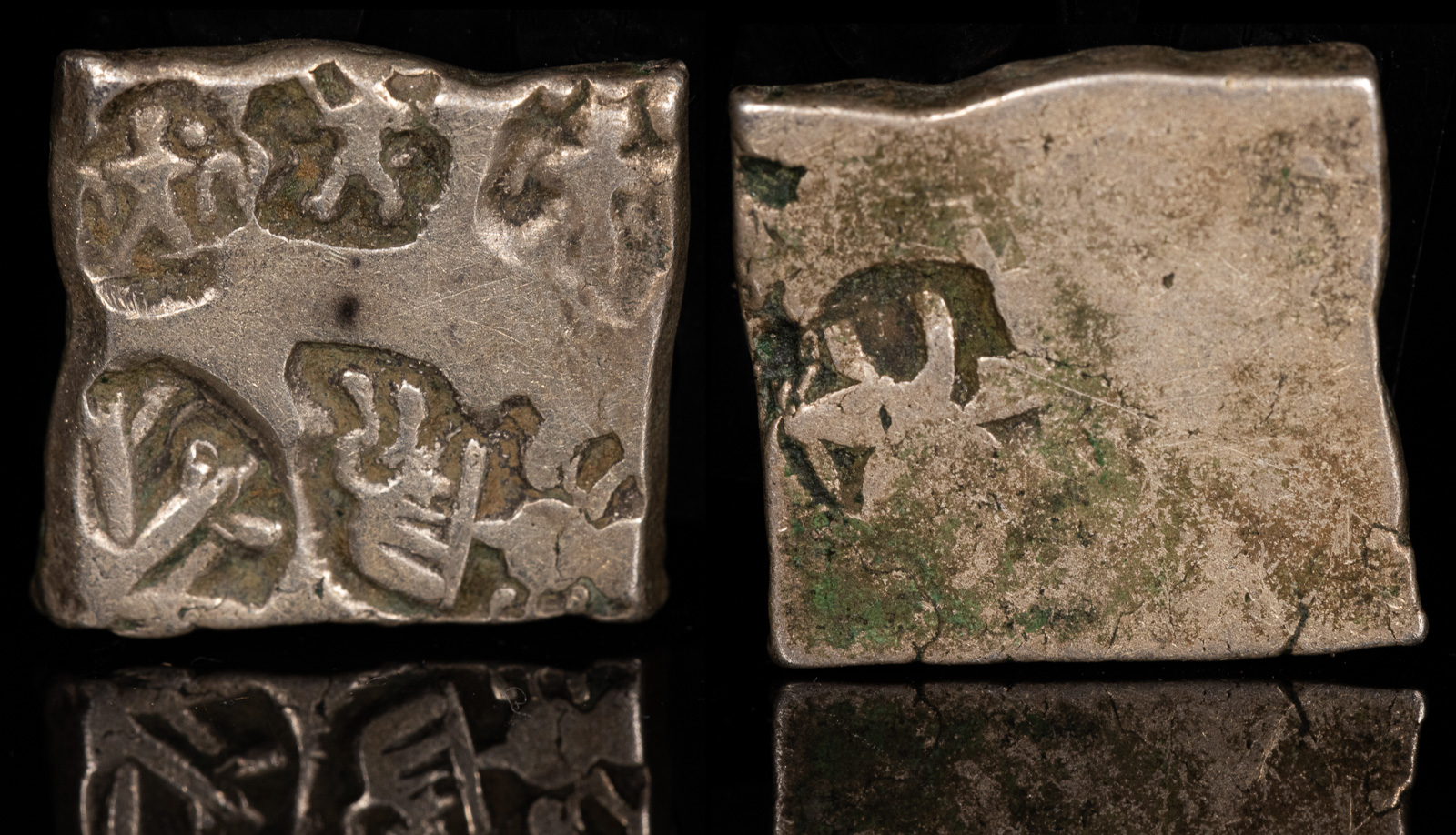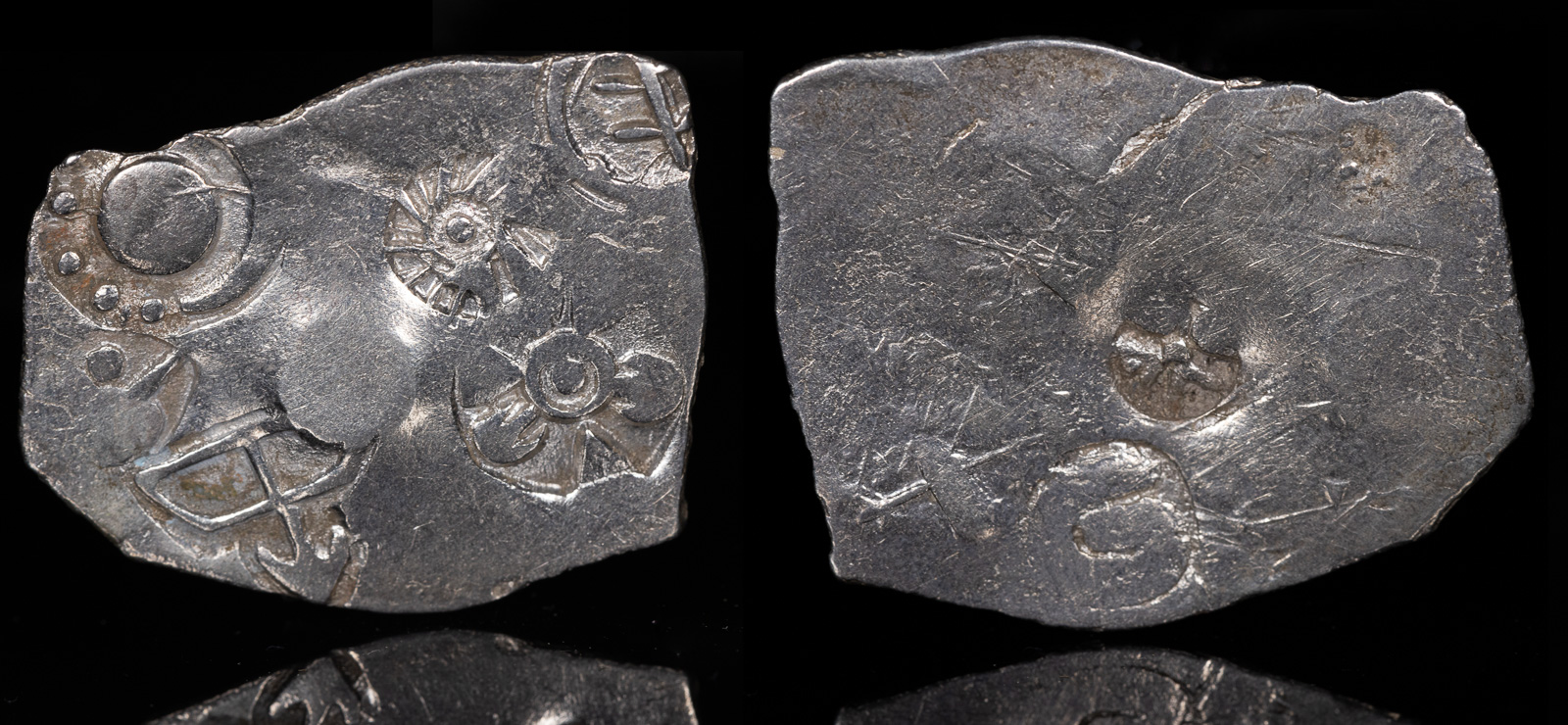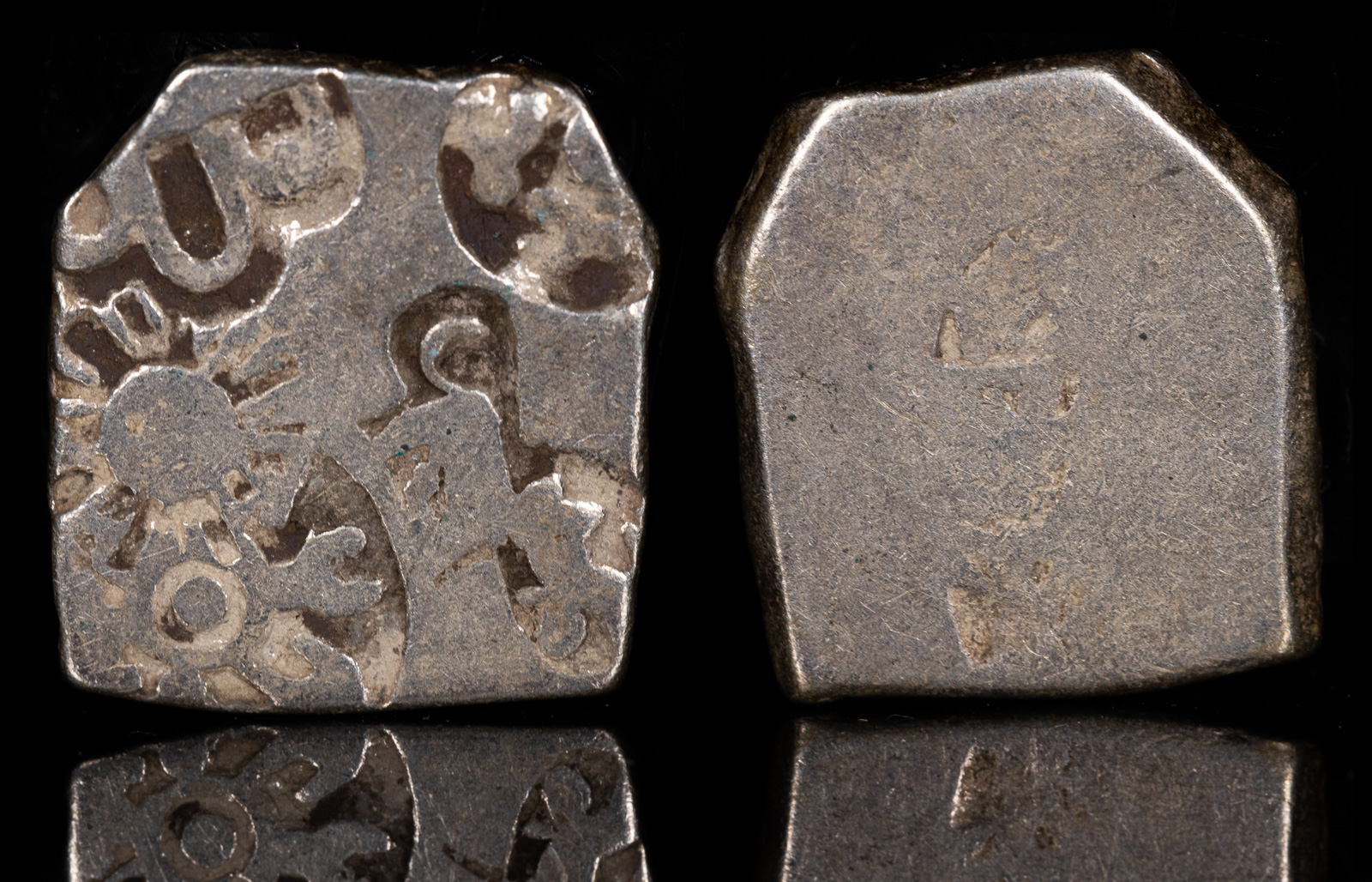Punched
View All Tags
One of the primary reasons ancient Indian coins were punched was to authenticate them and signify their value. Punch-marked coins, which were often made of silver, copper, or other metals, lacked the level of detail or artistry found in later, more refined coinages. The marks provided a simple and effective means of identification. Rulers, merchants, and individuals could verify that a coin was issued by an authorized authority and thus had legitimate value. This method was particularly useful in a society where trade, both local and across borders, relied heavily on the exchange of money, and authenticity was crucial to avoid fraud.
In addition to their functional purpose, the punch marks were also symbolic. The marks often featured motifs of religious, astrological, or cultural significance. Common symbols included representations of animals like elephants, bulls, and horses, as well as abstract geometric patterns. These symbols were likely meant to convey the authority of the ruler or the state that issued the coin, as well as to imbue the coin with auspicious meaning. For instance, the elephant and horse were symbols of power and royal authority in many ancient Indian kingdoms, while other motifs could represent prosperity, protection, or divinity.
The punching of coins also reflected the technological and economic conditions of the time. In the early stages of coinage, minting processes were less refined, and techniques such as punching provided a relatively straightforward way to produce coins.

Ashoka
210-190 BCE
AR 14mm 3.43g
GH 586

India, Magadha Series 1 AR punchmarked
c. 6th-5th century BCE, time of kings Bimbisara and Ajatashatru
23-27mm 3.34g
Five official punches plus one banker’s mark
GH 128
Ex CoinIndia

Obverse Five official punches.
Reverse Traces of unofficial banker’s marks
c. 4th-3rd century BCE
3.15g 16 x 14 mm.
GH 479
According to Gupta and Hardaker, the Series Va coins are the initial issues of the growing Maurya empire. They date these coins to c. 320-270 BCE, the time of Chandragupta Maurya and Bindusara.